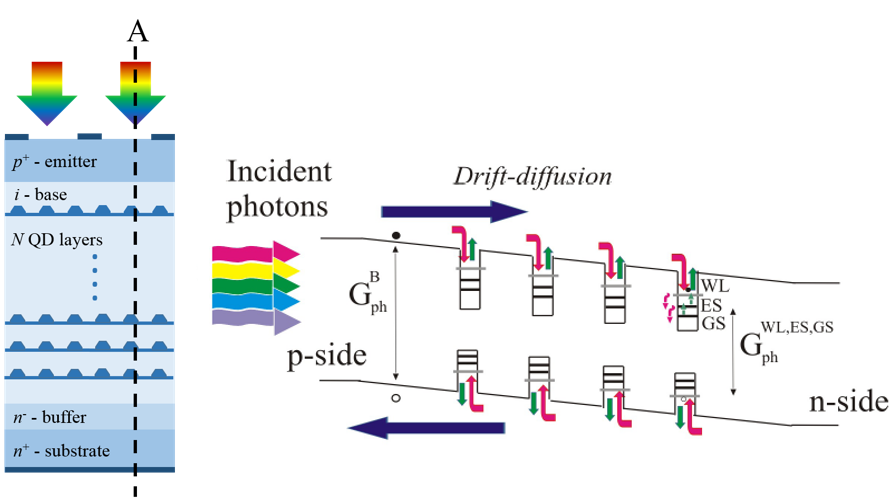Advanced in-house and commercial simulation tools available at POLITO and TUT will help to advance the understanding of the physics governing the devices developed in TFQD and support device development by extensive simulation studies. The peculiarity of QD solar cells physics will be addressed by an ad-hoc numercial simulator [1] that exploits a self-consistent description of carrier transport in the bulk material and of carrier kinetics in the QD confined states and is also able to cope with important phenomena in thin-film cells such as photon-recycling. From the viewpoint of optical modelling, rigorous electromagnetic simulations through methods such as finite difference time domain (FDTD) and rigorous coupled-wave analysis (RCWA) will be used for the design and optimization of the thin film cells. In this framework one further ambition of the project is to develop more computationally efficient approaches, based on the vast class of integral equation formulations, for the simulation of periodic and aperiodic problems.
